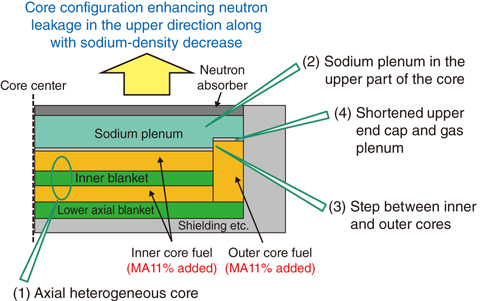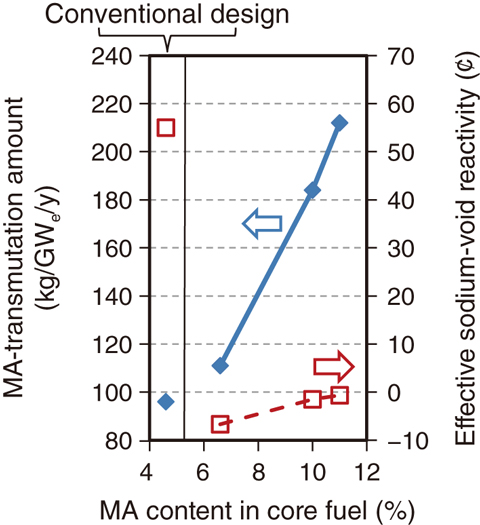
Fig.7-4 MA-transmutation core with low-sodium void reactivity

Fig.7-5 Achievement of a large MA-transmutation amount
High-level radioactive waste generated by reprocessing of spent fuel from nuclear-power plants includes minor actinides (MAs): neptunium, americium, curium, and the like. MAs exhibit long-term radiotoxicity and heat. Partitioning of MA from high-level waste and transmuting it in reactors is expected to contribute to the reduction in long-term underground radiotoxicity as well as to the reduction of waste-disposal area.
Fast reactors possess excellent neutronic characteristics that allow for recycling of MAs as a nuclear fuel and burning them to generate electricity. In the framework of a subsidized study led by the University of Fukui, the MA-transmutation core for a 750-MWe sodium-cooled fast reactor, which harmonizes core safety and nuclear-transmutation performance, was developed in cooperation with Hitachi-GE Nuclear Energy.
In order to increase the MA-transmutation amount, it is necessary to increase the MA content in core fuel. Since there is a trade-off between MA content and safety-related sodium-void reactivity, the reduction in this reactivity has been a major design challenge. Sodium-void reactivity, caused by sodium-density decrease due to temperature rise, has a positive value in conventional fast reactors, which can activate nuclear reactions in the core.
We invented a design index for the effective sodium-void reactivity (ESVR) by assuming the axial sodium-density distributions for a hypothetical accident in this study. In order to make the accident sluggish, a design condition that kept the ESVR negative was introduced. In the core design, the following measures were employed, as shown in Fig.7-4: (1) an axial heterogeneous core, (2) a sodium plenum in the upper part of the core, (3) a step between the inner and outer cores, and (4) a shortened upper-end cap and gas plenum. Then, the neutron leakage in the upper direction was enhanced, along with a decrease in the sodium density, such that the ESVR significantly decreased with the generation of a margin on the negative-value side (see red plots in Fig.7-5). This margin was consumed by maximizing the MA content; consequently, the MA content was increased up to 11% in the core-fuel heavy metal, as compared with a value of 5% for conventional fast reactors. We predict a remarkable improvement in the MA-transmutation amount, namely double that which is presently obtained in conventional fast reactors (see blue plots in Fig.7-5).
Since the condition where the MA content exceeds 5% rarely occurs in a breeding scenario in which light-water reactors are replaced with fast reactors, the conventional fast reactors have sufficient nuclear-transmutation capability. Nevertheless, the MA-transmutation core developed in this study offers great flexibility in MA management. For instance, concentrative MA burning becomes possible with the introduction of a small number of fast reactors; as does localized MA treatment at a minimal part of the fuel cycle in the case where many fast reactors are introduced in combination with conventional ones.
This study includes some results related to the Study of minor actinide transmutation using Monju data in FY2014, which was entrusted to the University of Fukui by the Ministry of Education, Culture, Sports, Science and Technology of Japan (MEXT).